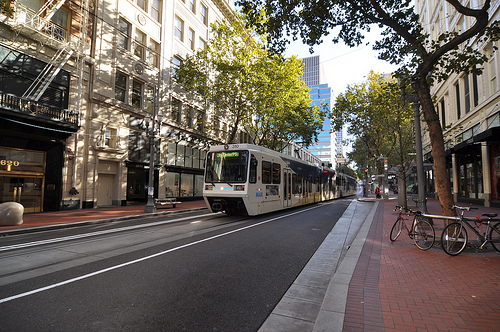
In our everyday lives we get hung up on our normal habits. Whether you ride a bike, drive a car,ride the bus or simply walk to where you need to go, our daily habits become so ingrained in our daily habits that we don’t often think about how other communities are living. It was with this attitude that I drug my family off to Portland, OR last week to experience the city while I attended the Railvolution conference. What we experienced, was a city that in many ways resembles our hometown of Indianapolis in appearance but differs greatly in form when examined further.
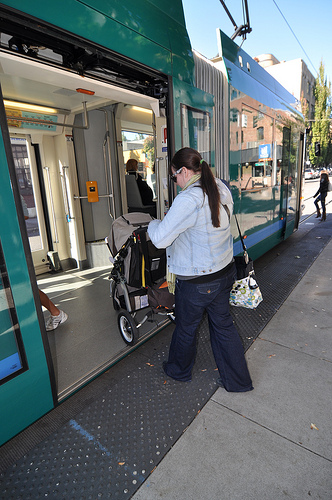
The first notion that things were going to be different, was when we left the airport terminal and boarded the local light rail, MAX. That’s right folks, located right at the airport. Past all the parking garage doors and the car rentals the signs kept directing us to “Light Rail MAX”. We walked, bought our tickets and boarded the train; with no effort involved I might add in getting my 6 month old stroller bound son onto said train. This began a common theme for our transportation around the region for the week. “Go By Train” (as many signs around town tell passers-by). And by train we did.
Be it Light Rail or the ever touted Streetcar we were able to travel everywhere we wanted all week, without a car. We visited the zoo. We visited the suburbs. We even used the bus system which was the only unfortunate part of travelling the region; because they were so packed, it was difficult to use the stroller on them. But we made it.
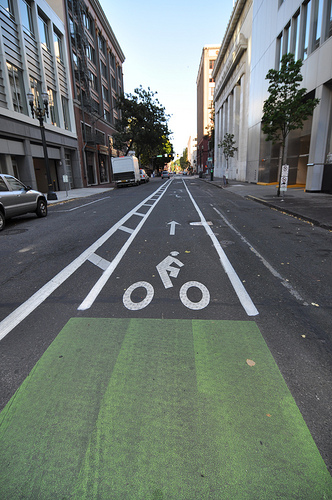
Cyclists were on every street and with what seemed like every street corner as well with accomodations made for them to either park their bikes, or have priority over automobile traffic.
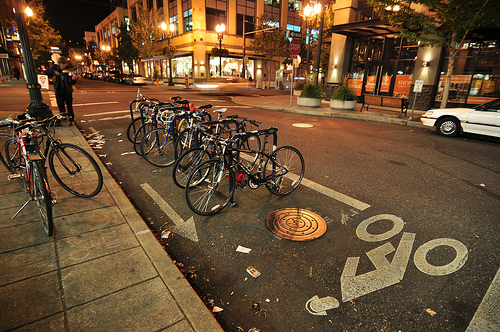
Pedestrians though, are at the roots of all planning it seems, when something is built in Portland. Sidewalks downtown are wide, clean, unbroken and are lined with all manner of commercial store-front whether it be the strereotypical coffee shop (it seemed literaly like there was a Starbucks on every corner) or microbrewery or pizza joint. They weren’t all your top of the line clean floors with mirror polished windows. Some were in ill repair yet still seemed to be moving people in and out quite frequently. Also lining many city sidewalks were public art. Seemed like there was something cool all over the place. For you Indy folks, you know how often we tend to laugh at the Carmel Arts District statues on Main Street? Guess what, they have them smack dab in the middle of Portland.
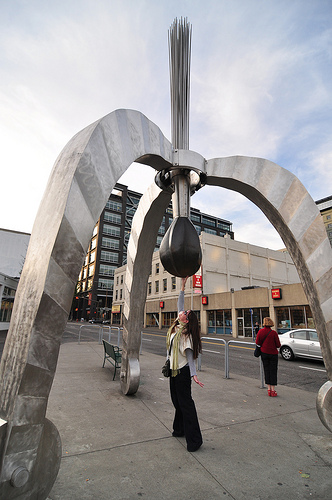
Oh yeah, Railvolution. The reason I was there. I spent 4 days tackling mobile workshops and in house workshops. I got to travel to United Streetcar who is located in an eastern suburb and whom is manufacturing new modern streetcars for Portland, and for Tuscon, AZ. I attended 3-5 workshops a day at the hotel. Took over 30 pages of hand written notes, 250+ photos, an hour or so of video and listened intently to the people who are out there doing, what we here at Urban Indy advocate on a daily basis.
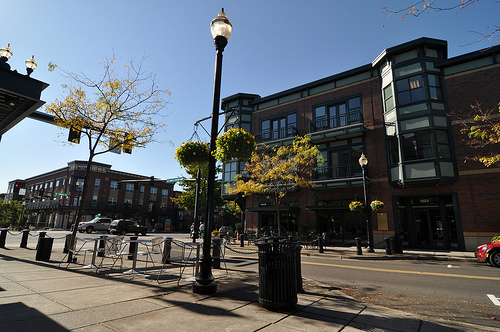
Even in the suburbs they seem to get it part of the time. I visited one stop along the westside MAX Blue Line where a TOD has been developing for years and in which dense housing is mixed with good commercial and seems to be thriving.
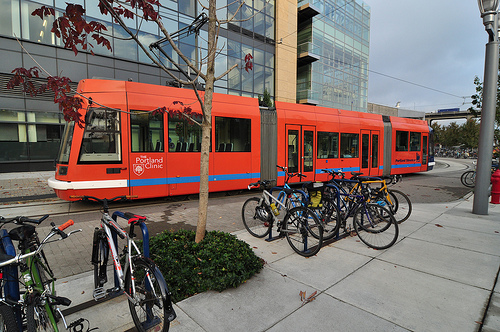
Sure they have downfalls. I saw streets that could walk hand in hand down the poor design aisle with Keystone Ave. But at least there, officials recognize this, and are doing things about it.
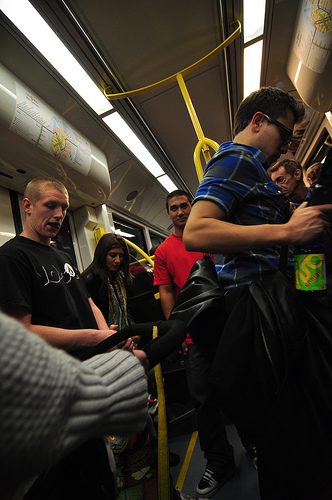
This post represents my first step into talking about the week I spent there. So stay tuned and watch for photos and additional details as I decompress from a simply AWESOME week spent in Portland, OR. This all wouldn’t have been possible without a scholarship from Railvolution for which I am truly grateful, as well as the support from local’s People for Urban Progress, Steve Devoe (of Downtown Indianapolis Streetcar), Jill Ditmire of Mass Ave Wine Shoppe, Richard Vonnegut & Hoosier Rails to Trails.
Cool Curt —- Thanks for the post and the good pictures. Looking forward to hearing more details from your trip and more of your notes from the conference.
When I visited with designers at Orenco (something here in Indy, we would call a TOD) they referred to it as a TAD (Transit Adjacent Development), since the town center is located along a busy arterial, but the transit stop is a 5 minute walk away.
The neighborhood on the other side was refered to as a TED (Transit Evasive Development).
Derek you are probably right. Orenco was the only suburban type of spot I got to visit besides Clackamas Town Center which is really a mall and not a TOD at all. Your definitiion of TAD is correct. However, Orenco was cited by a few people as one that they considered a successful region, even if it wasn’t totally wrapped around the station. The center was about a 5 minute walk from the station… not optimal. But the center itself was decent. I wish I had more time to walk around. I went out there for lunch and didnt get as much time to mill around as I had hoped but it was better than one of the other TOD’s called The Round that was pointed out as a failure.
Is “The Round’ that you are refering to in Beaverton, OR?
Wonderful information– great pics– looking forward to hearing more–and how we can do the same in Indy- THANKS !
A train from the airport to downtown Indy should be the first priority.
Great article on Portland – I was there in ’07 via bicycle, and hopped on the 1st light-rail/streetcar that I saw. Walked on right next to a bike-hanger; rode for free to drop my bike at a bike shop for shipping back to Indy. Then took the same rail line for a small fee, all the way to the airport.
Looking forward to the day when we have light rail from airport to D’town to Fishers area . . .and the completion of current bike lane/path plans for our city!
I recently visited Portland and was very impressed with the bike infrastructure. There were many things that i thought could be replicated in Indy relatively easily. For example, the photo above showing a car parking space that has been converted to a bike holding space, allowing for 10-15 bikes to be parked in the same size area that had previously accommodated only one car. I noticed serveral bars that had this set up in front of their business as well. After speaking with locals about it, they said the businesses are starting to advocate for it with City officials. The businesses have come to see the direct economic benefits of adding bike parking at their front doors.
Everyone should know that although Portland has become a model for urban planning and transit options, the process was not always easy. There have been strong dissenters every step of the way and Portland still has it’s fair share of naysayers that fight any attempt to improve livibility in the City.